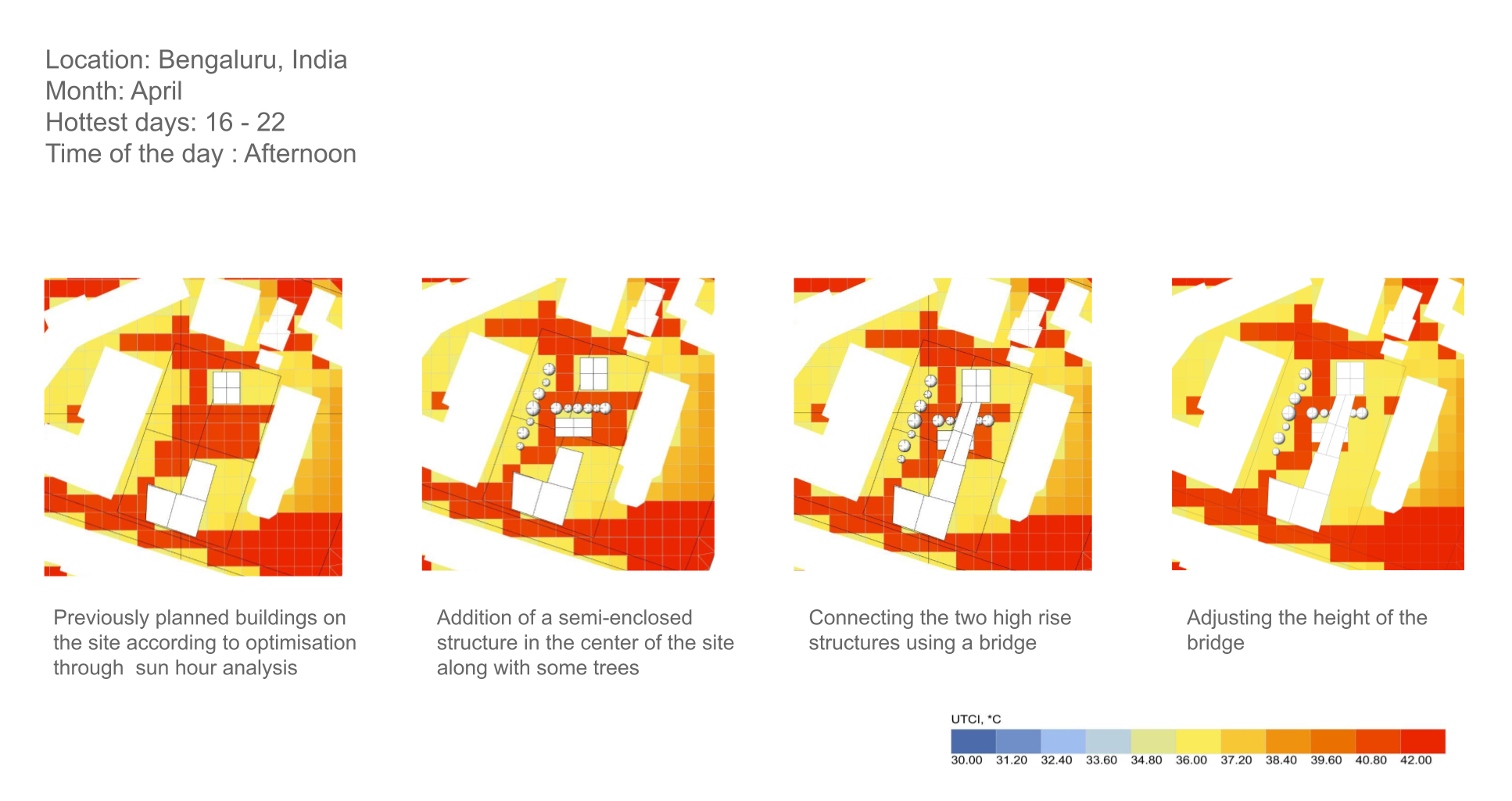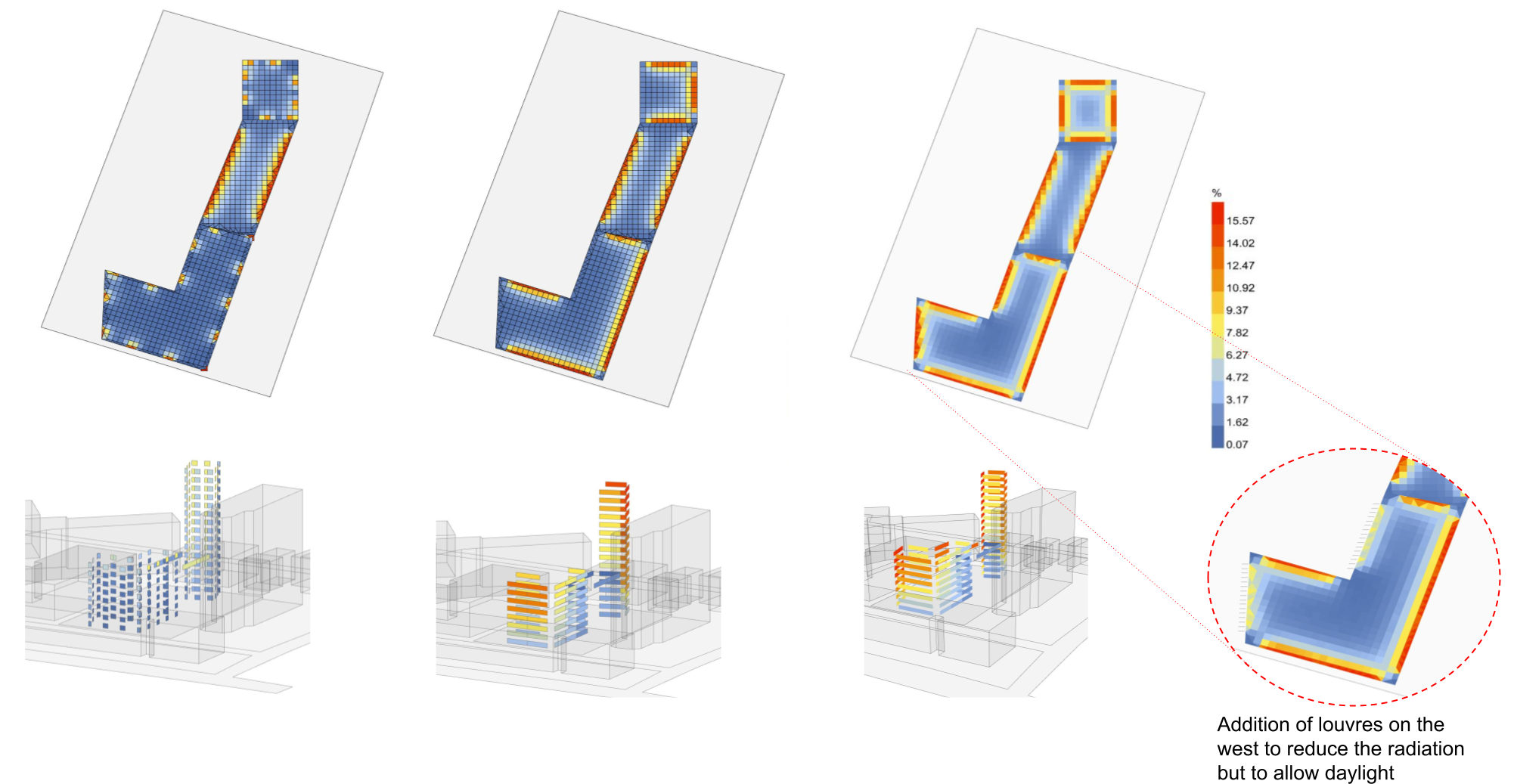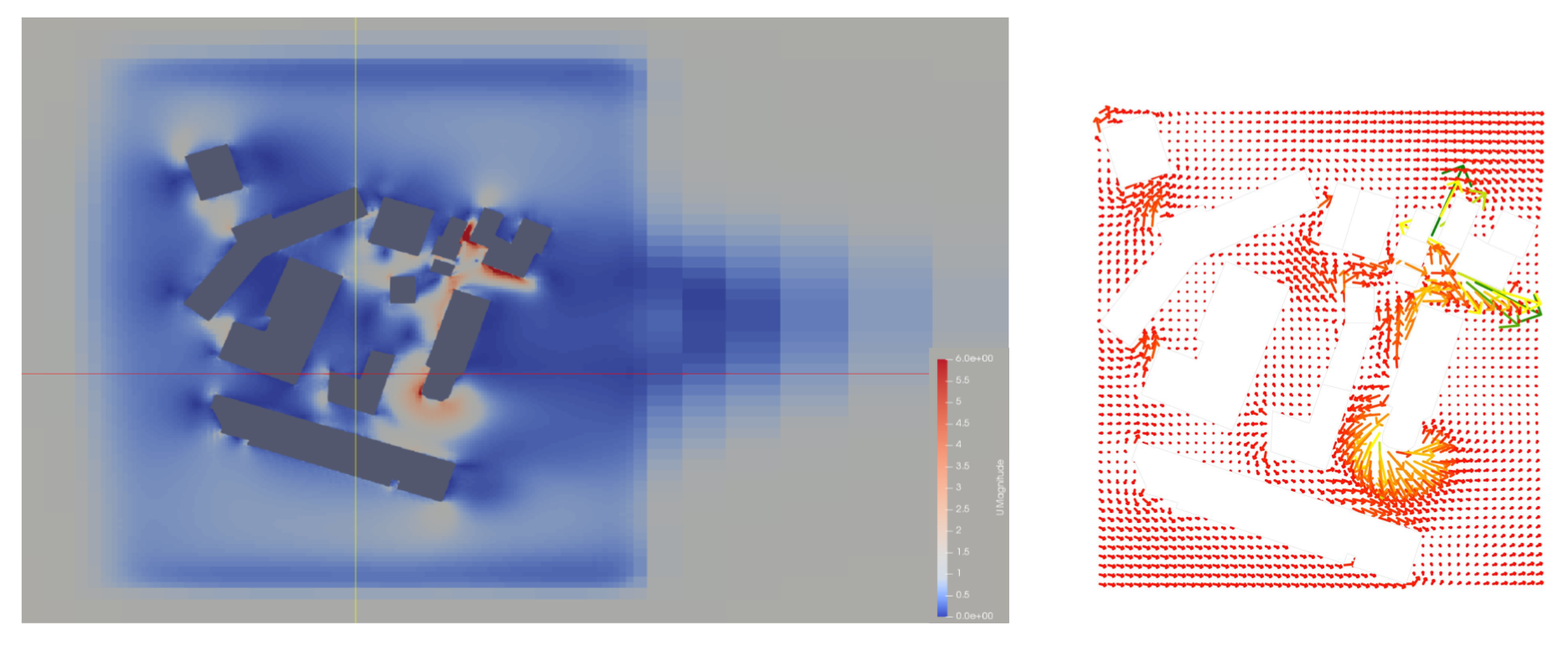LOCATION : BENGALURU, INDIA
KOPPEAN CLIMATE : Aw (TROPICAL WET & DRY CLIMATE)

CLIMATE ANALYSIS
Bengaluru has become hotter than it used to be 2 decades ago. Now we see temperature reaching above 40*c. The temperature starts getting hotter from March and reaches its peak in mid April and once the SW monsoon hits the coast of India the temperature subsides. As the monsoon sets in the humidity begins to increase and at this time we can see the direct radiation is also less due to the sky being cloudy.

SUNHOUR ANALYSIS
It was required to find a optimum level of radiation on the facade which does not make the building get too hot and at the same time it was necessary to provide sufficient daylight. With the surrounding buildings casting shadow onto the site at different points of the day, I tried to find a form that gets moderate radiation.

OUTDOOR THERMAL COMFORT

DAYLIGHT ANALYSIS
With the conventional window system, the 1st simulation was ran. This resulted in very minimum daylight entering into the building. To increase the lighting, Long windows strips were added but with no windows facing the west. Finally, provided windows on all the directions and then added louvres on the facades facing the west.

WIND ANALYSIS
Got a chance to explore the wind dynamics and understood how wind begins to downflow near the stagnation point when it approached towards a structure.
It was also observed how taller structures had a larger wind stream at the corner of the structure.

Using Infrared, we were able to run more simulations in shorter time period.

THANK YOU!

